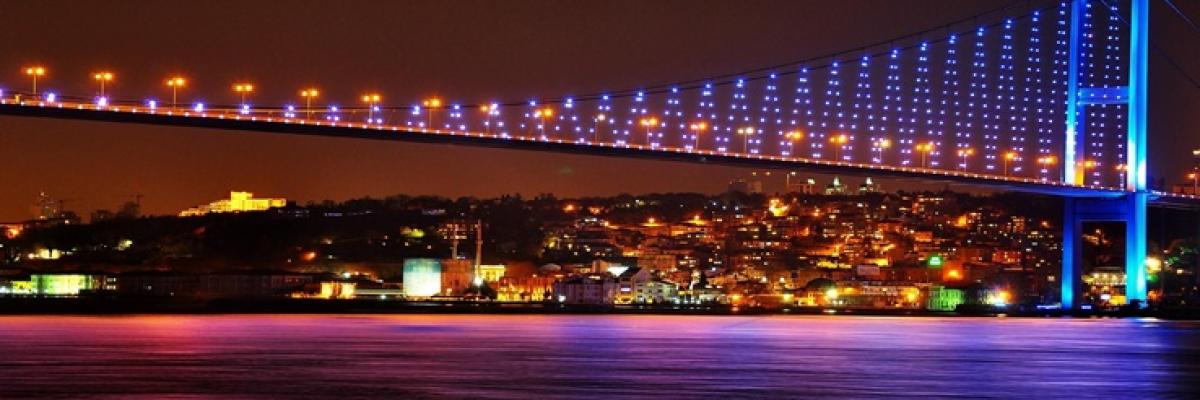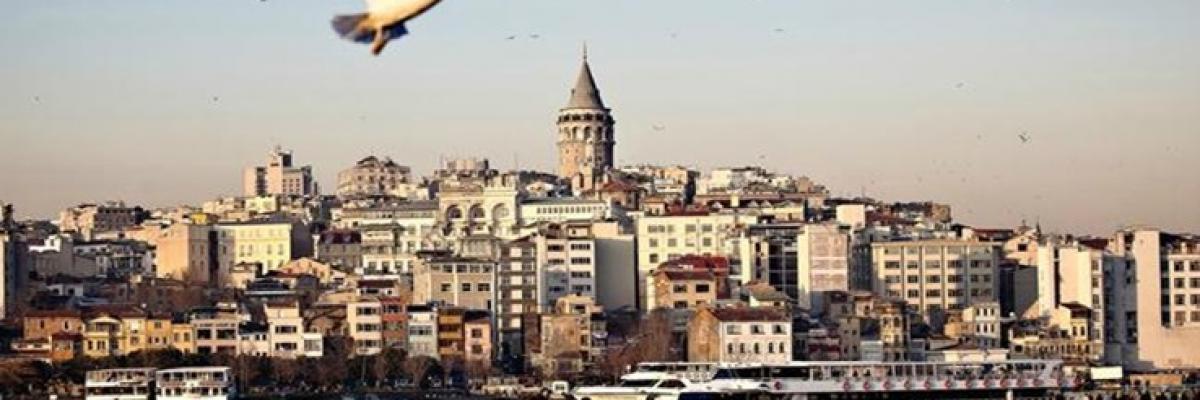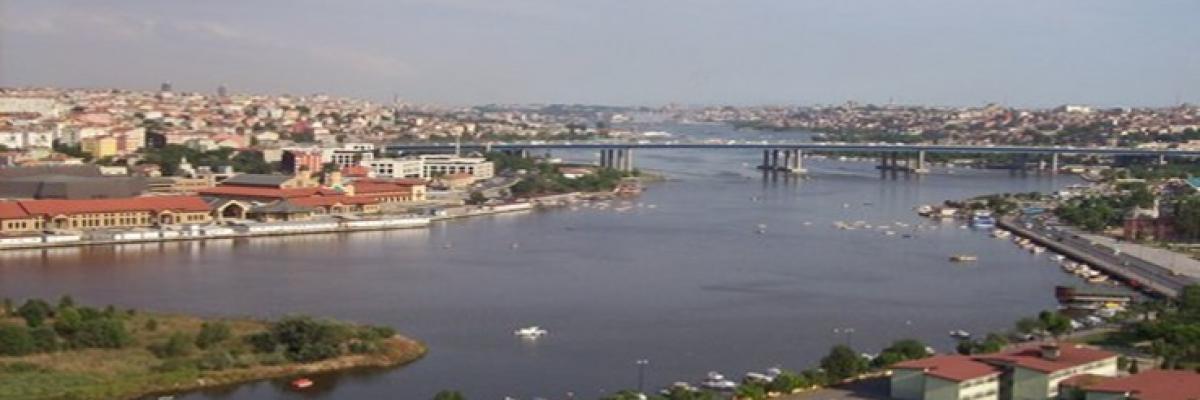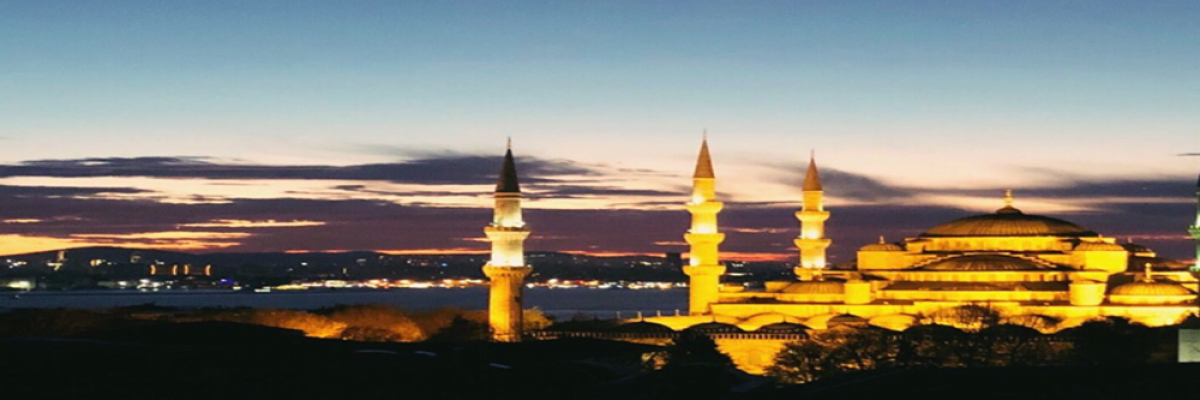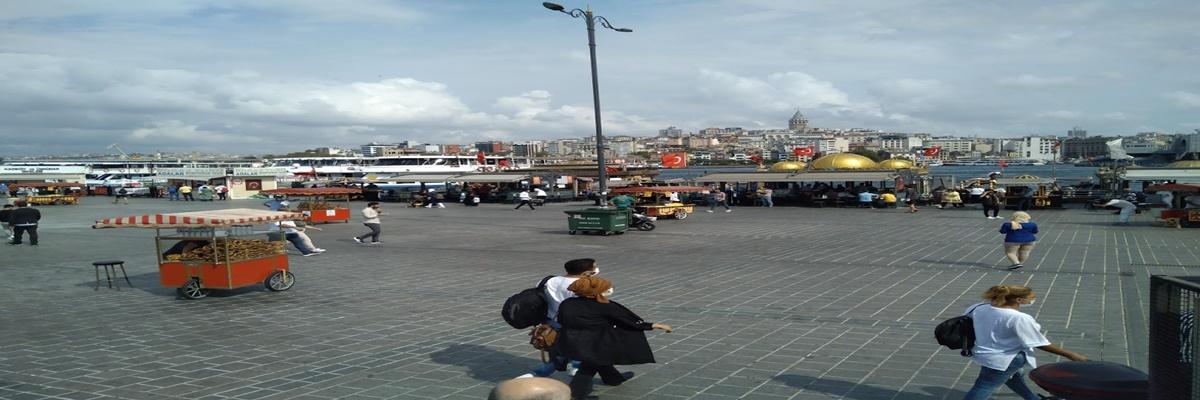Adıyaman
ADIYAMAN

History of Adıyaman
Adıyaman is one of the oldest known settlements in history. In the examinations made in Adıyaman Palanlı Cave, the history of the city BC. It is understood that it dates back to 40,000 years.
Again, from the historical findings in Samsat-Şehremuz Hill, BC. Paleolithic until 7.OOO, Neolithic until 5.000 BC, BC. Chalcolithic until 3.OOO years and BC. It is understood that between 3.000 and 1.200 years, Bronze Age periods were experienced. During this period, the region changed hands between the Hittites and the Mitanids and a dark period began with the collapse of the Hittite State (1200 BC). B.C. The foundation of the Phrygian State from 1.200 BC. There is no written source regarding the period between 750 years. But; As the region started to come under the Assyrian influence in this period, the Assyrian seals in Samsat and the inscriptions written with Hittite Hieroglyphs in Kahta, Eskitaş Village show that the historical sequence in Anatolia continued in Adıyaman. During this period, Kummuh State, one of the Late Hittite city states that emerged with the collapse of the Hittite State in Adıyaman and its surroundings, ruled.
From the beginning of the 6th century, the region was dominated by the Persians and the region was governed by Satraps (Governors). B.C. In 334, when the Macedonian King Alexander the Great entered Anatolia, Persians lost their sovereignty and BC. Until the 1st century, Macedonian Seleucids ruled in the region. During the weakening of the power of the Selev-kos, King Mithradetes l Kallinikos declared the independence of the Kingdom of Commagene (69 BC).
The Kingdom of Commagene, whose capital was Samosota (Samsat), continued its sovereignty until 72 AD, when the region passed into the hands of the Roman Empire and Adıyaman was attached to the State of Syria (Syria) of the Roman Empire as the 6th Legion. Adiyaman joined the Eastern Roman Empire. Although the Islamic raids started in the region from 643, the Islamic rule was only established with the Umayyads in 670. In 758, II entered the domination of Mansur Ibn-i Cavene, one of the Abbasid commanders. Its rule begins. In 958, the region again passes into the hands of the Byzantines.
Between the years 1114-1181, Turkish raids occurred in the region. Between the years 1204-1298, the Anatolian Seljuks conquered Samsat and its region. Mongol attacks occurred in 1230 and 1250. In 1298, the region and the region passed into the hands of the Mamluks. In 1393, Adıyaman was plundered, this time by Tamerlane.
During the Middle Ages, when there was a great instability, Adıyaman changed hands between Byzantine, Umayyad, Abbasi, Anatolian Seljuks and Dulkadiroğullan and finally joined the Ottoman lands in 1516 during Yavuz Sultan Selim's Iran expedition. Adiyaman, which joined the Ottoman lands, was connected to the Maraş Beylerbeylik with a Sancak, which was headquartered in Samsat, but after the Tanzimat it was attached to Malatya as an accident.
Preserving its old administrative structure until 1954, Adıyaman, which was an accident in Malatya from the foundation of the Republic until 1954, separated from Malatya with the Law No. 6418 on December 1, 1954 and became an independent province.

Adıyaman Chronology
B.C. 40000- BC 7000 Paleolithic
B.C. 7000 - BC 5000 Neolithic
B.C. 5000 - BC 3000 Chalcolithic
B.C. 3000 - BC 1200 Hittites
B.C. 1200 - BC 750 Assyrians
B.C. 750 - BC 600 Phrygians
B.C. 600-BC. 334 Persians
B.C. 334-BC. 69 Macedonians
B.C. 69-M.S. 72 Kingdom of Commagene
72-395 Roman Empire
395-670 Eastern Rome (Byzantine)
670-758 Umayyads
758 - 926 Abbasids
926- 958 Hamdanis
958--1114 Byzantines
1114 - 1204 Eyyubiler
1204--1298 Anatolian Seljuks
1298 - 1516 Mamluks
1516-1923 Ottoman Empire

Historical Development of Adıyaman
Archeological excavations and surface researches in Adıyaman and its surroundings showed that the history of this place goes back to the Paleolithic period.
Bearing the traces of the cultural phase that the human world called the Gathering and Hunting Period, Adiyaman, which has been the cradle of great civilizations, has become a research area that has been occupying the world archaeologists for 100 years.
Hand axes made of flint stone, borers and diggers, arrowheads made of obsidian, terracotta pieces belonging to Paleolithic (40.000) and Neolithic periods found in archaeological excavations in the region;
Chalcolithic period terracotta vessels and objects, Early Bronze Age metal works; Stone and terracotta artifacts from the Iron Age and Hellenistic period, oil lamps from the Roman period, various pots, sculptures and stone artifacts, Byzantine cube and other ceramic types; Golden ornaments belonging to the Abbasid period, glazed ceramics, vases, glass works belonging to the Seljuk and Ottoman periods; Many archaeological artifacts such as seals, rings and bracelets, human and animal figures reveal the historical richness of Adıyaman and its surroundings.
The historical richness of Adıyaman and its surroundings has been known for a long time, and the region has been investigated by many local and foreign scientists in the last hundred years.

Adıyaman in ancient times
Due to its geographical location, the Southeastern Anatolia Region is a central region located between Mesopotamia in the south, Iran in the east, Eastern Anatolia and the Caucasus in the north, and Central Anatolian steppes in the west. The plateaus of the Eastern and Southeastern Anatolia Regions have witnessed rare civilizations throughout human history, as they were a crossroads of ancient civilizations that glowed and faded thousands of years ago between the mentioned regions.
PALANLI KAYAALTI SHELTER, located on the Adıyaman-Malatya highway, is such a paleolithic period settlement. There are also settlements such as Kung Kıracı Hill, Ziyaret Hill and Kemşak Hill in Adıyaman Samsat Şehramuz Hill and its Surroundings.
Samsat (Samosata Höyük), which is located in the Atatürk Dam Pond area today, is one of the leading settlements reflecting the Neolithic, Chalcolithic and Old Bronze Periods in Adıyaman region. It has also been the capital of the Commagene Kingdom. Likewise, Tille Höyük is another important mound of the region.
Adıyaman is a city famous for its Hellenistic and Roman Period works. The most important of these ruins is on the Mount Nemrut, which is 2206 m high, near Karadut Village. The area between the Taurus Mountains and the Euphrates River was called Commagene in the Hellenistic and Roman ages.
In the city of Arsameia, which is located next to the Old Kahta Village on the Kahta Stream, which was called Nymphaios in Antiquity, inscriptions describing the establishment of the ancient city were found. The Septimus Severus Bridge on the Cendere Stream, 3 km southwest of this city, on the Cendere Stream, was built during the Romans period according to the Latin inscription on the columns.
On the summit of Mount Nemrut, which is an extension of the Antitoros, at a height of 2206 meters, the temple tomb monument, known by everyone today and dating from the Late Hellenistic Period, has been accepted as one of the most valuable cultural assets of the world. This monument and its surrounding was included in the UNESCO list of "Cultural Heritage of Humanity" in 1987 and declared a National Park by the Turkish Government in 1988.
There are also rock tombs among the Roman artifacts. Many tombs carved into limestone rocks were found along the slope in the Euphrates valley to the east of Eskitoz (Ancos) Village of Adıyaman-Kahta District. However, they remained under the waters of Atatürk Dam.
Adıyaman in the Middle Ages
Adıyaman and its surroundings were exposed to Islamic movements while under the sovereignty of the Eastern Roman Empire (Byzantine State) since 395 A.D.
During the caliphate of Prophet Umar (634-644), Adıyaman and its surroundings were conquered by Muslim Arabs. As a result of the wars in which well-known Islamic commanders such as Aba Ubeyde, Khalid Bin Walid, Sait Bin Ebi Vakkas and Iyaz Bin Ganm participated, this region joined the Islamic lands in 638.
Adıyaman and its environs became a border zone and conflict between Muslims and Byzantines for a while. Mansur Bin Cavena, one of the Umayyad commanders, captured Adıyaman in 670. It is rumored that this commander built today's Adıyaman Castle, which is in the first settlement area of Adıyaman city.
M.S. In 758, the Umayyad rule was ended by the Abbasid caliph Ebu Cafer Mansur. Thus, the Abbasids dominate Adıyaman and its surroundings.
M.S. In 1066, Gümüştekin, one of the Seljuk commanders, captured the city of Adıyaman (Hısn-ı Mansur-u) and its surroundings; however, it withdraws due to the internal response. In 1082 following the Battle of Malazgirt in 1071, Hıns-ı Mansur (Adıyaman city) is captured again and the Abbasid rule ends.
Adiyaman and its surroundings, which were under the rule of the Seljuks, were under the influence of the Crusader Wars and temporarily changed hands. Adıyaman and its surroundings came under the control of the Ayyubils between 1114-1204. Anatolian Seljuks were invaded by Mongols in 1298; internal turmoil is experienced. This situation continues until 1339. In 1339, Adıyaman and its surroundings came under the sovereignty of Dulkadiroğulları after a while after the establishment of Dulkadiroğulları Principality. Even if the Ottoman Sultan Yıldırım Beyazıt conquered the region in 1398, he withdrew due to the Timur threat that dominated Eastern Anatolia. As a result, Adıyaman and its surroundings pass into the hands of Dulkadiroğulları again.
Adıyaman in the New Age
In 1515, Yavuz Sultan Selim, the ruler of the Ottoman Empire, ended the sovereignty of the Dulkadiroğulları Principality on his return to Iran and added Adıyaman and its surroundings to its lands. Thus, the Ottoman Empire period begins in Adıyaman.
After Adıyaman and its surroundings fall under Ottoman rule, it ceases to be along the border. As a result, he gets rid of the fear of war, raid and invasion, and regains peace and tranquility. Due to the resettlement policy of the Ottoman administration that forced the Turkish tribes to reside in certain regions, riots took place from time to time in this region as in other parts of Anatolia; but these rebellions are suppressed.

Administrative History of Adıyaman
The city of Adıyaman, which passed from Dulkadiroğulları to the Ottoman Empire, is first located within the borders of Kahramanmaraş Province. In the first years (1519-1530) Samsat is connected to the starboard. It connects to Elbistan after 1531. In 1841, it is seen that the city of Adıyaman became the district center. It is seen that the city began to be governed by an official who served on behalf of the governor, ie the district governor. However, the word "District Governor" is not encountered in historical documents. In 1849, it was attached to the city of Diyarbakır. As of this date, it is seen that the districts of Besni, Kahta and Siverek were also connected to Adıyaman. When Malatya became the starboard in 1859, Adıyaman was turned into a district again. This situation continues until 01.12.1954, when Adıyaman is officially the city center.
With the law in question, Adıyaman became a province. With the law number 6414 and dated 22.06.1954, Kahta, Besni, Gerger and Çelikhan districts and 16 sub-districts were attached to Adıyaman. Later, with the law numbered 7035, Gölbaşı on 01.04.1958, Samsat on 01.04.1960, Tut with the law 1664 on 09.05.1990 on 09.05.1990 and Sincik district center in 1991. Today, there are 8 district centers in Adıyaman.
. * Without seeing Nemrut Mountain, the 8th wonder of the world, without watching the sunrise and sunset, visiting the historical and touristic places of Adıyaman,
* Without eating fish from the restaurants in Atatürk Dam Kahta Beach,
* Without visiting the Adıyaman Museum and seeing the "Golden Apple" Award given to Mount Nemrut,
* Buy carpets, rugs, saddlebags and Nemrut sculptures woven in the region,
* Without shopping in the otter market,
* Without taking the Besni Grape
* Without eating Adıyaman Hıtabı, Pan, Kebab, Şilki (Şıllik) Dessert,
* Not without listening to the Harfane night.
Adiyaman Museum
There are approximately 30,000 works in the museum. Approximately 2,000 works of these are exhibited. In the archaeological work hall that has continued from the Paleolithic Age to the Ottoman period; There are various artifacts belonging to the Paleolithic, Neolithic, Chalcolithic, Bronze Age, Iron Age, Hellenistic, Roman, Byzantine, Islamic, Seljuk and Ottoman periods. In the ethnographic works hall, hand-woven carpets, rugs and cicim collected in the region, men's and women's clothes, silver jewelry and copper items are exhibited.
Museum; It is open to visitors every day except Mondays between 08 - 12 and 13.30 - 17.30.
Nemrut Mountain Ruins
Nemrut Mountain ruins are 87 km directly from the city center. On the Arsameia Antique road, 77 km. It is 43 km away from the town of Kahta. This world wonder Tumulus is 2206 meters high on the Eastern Taurus mountain range, on a hill overlooking the Fırat River passages and the plain.
The mausoleum built for the King of Commagene I Antiochos, a tumulus was formed by piling crushed and pebbles on it, and a fire altar and giant statues and relief steles in Greco-Persian style were built on the terraces around the tumulus.
East Terrace
There are giant statues of gods sitting in rows on thrones about 10 meters high. The faces of the statues are looking towards the sun. On this terrace, there are the guardian eagle representing the sky sovereignty of the Commagene Kingdom, the guardian lion representing the kingdom's domination of the earth, the statues of Commagene King Antiochos I, Commagene (Tyche), Zeus, Apollon and Heracles. There are relief steles of members of the Commagene royal family in the north and south of the terrace. Again on this terrace, there is a fire altar (Altar) in front of the statues and a lion statue sitting next to it. Sunrise in Nemrut can be watched from this terrace.
West Terrace
As on the East Terrace, there are giant god statues sitting on their thrones, a statue of the King of Commagene Antiochos I and reliefs of shaking hands with the gods. There is also a lion horoscope relief on astrology. From the moon and stars on the lion relief, the date of July 7, 62 BC is read. This date is the date of King Antiochos' ascension. You can watch the sunset in Nemrut from this terrace.
North Terrace
The North Terrace is 180 m. It is a long ceremonial road. There are unfinished steles and pedestals on the terrace.
Arsameia Ruins (Nymphaıos Arsameiaası)
ARSAMEIA, which is the summer administrative center of Commagene Kingdom, is located between Kocahisar village and Damlacık village in Adıyaman Province, Kahta district, east of Kahta Stream (Nymphaios). In addition to many relief sculptures and steles on the ceremonial road to the south, there is the largest known Greek inscription in Anatolia. In the place where the inscription is located, there is a passage that goes down with 150 steps, which is used for the sacred purpose, and the ruins of the palace in the upper part.
How To Get To Mount Nemrut?
The best season to climb Mount Nemrut starts from mid-March to mid-November depending on the weather conditions. The sunrise and sunset on Mount Nemrut are more magnificent than anywhere else in the world. The sunrise and sunset leave a profound effect on the audience.
Adıyaman (Hısn-I Mansur) Castle
Located in the city center of Adıyaman, the castle was built on a 25 m high masonry mound. Restoration and landscaping is carried out by Adıyaman Municipality.
New Castle
It is in Kocahisar Village of Kahta district of Adıyaman province. The castle, whose first construction date goes back to the Commagene Kingdom, is today's form from the Mamluk period. There are water tanks, a bath, a mosque, and a secret waterway that leads down to Kahta Çay (Nymphaios). There is also a tower where mail pigeons are raised.
Gerger Castle (Euphrates Land)
85 km from the Kahta District of Adıyaman. The castle, which dates back to the Late Hittite period and located in the district of Gerger at a distance, is located on the west bank of the Euphrates River. There is a relief belonging to King Samos on the western walls of the castle, which was built on steep rocks by Arsames, who was the ancestor of the Commageneans in the second century B.C. There are mosques, shops and water cisterns in the castle, which was also used in the Islamic period.

Mosques and Church in Adıyaman Center
Grand Mosque
It is located in the city center of Adıyaman. The mosque, which was built during the time of the Dulkadiroğulları Principality, was repaired many times later. An inscription stating that the mosque was built in 1863 in its current form is located on the upper surface of the minaret base facing east. It is understood that the mosque was repaired in 1902 in another inscription in the arch at the same place.
Bazaar Mosque
It is located in the city center. According to its foundation, it was built by Hacı Abdulgani in 1550. The walls of the rectangular mosque, supported by buttresses, are made of cut stone.
Eskisaray Mosque
The Old Palace Mosque, located in the central Eskisaray district of our city, was built by İbrahim Pasha in 1148 AH. The mosque has been repaired many times. In the last repair, the mosque was enlarged to the north.
Kab Mosque
According to the epitaph of Kab Mosque, which gave its name to the neighborhood, it was rebuilt by Hacı Mehmet Ali in Hijri 1342 (1923) after it was built in 1182 (1768). In 2010, it was renovated by the Regional Directorate of Foundations in accordance with the original.
Yenipınar Mosque
It is located in Adıyaman Merkez Yenipınar district. According to the inscription on the pedestal of the minaret, it was built by someone named Hacı Mahmut in 1133 (1720).
St. Peter and St Paul Church
It is in Adıyaman Central Mara District. It is known in the 1905 inscription that the church was repaired and only this church existed before. It is a Syriac Church called St. Paulus and it is a registered building. It is used by the Syriac community for worship. In 2010, a restoration was carried out by the Regional Directorate of Foundations.

Mosques and Social Complex in Besni District
Grand Mosque
According to the inscription on the mosque, the Ulu Mosque, built in the 17th century, does not have a neat plan like the other mosques here.
Külhanönü Mosque
The mosque was unearthed in 2009 as a result of excavations, where the old plans of the mosque (five plan phases) were undergone. No inscriptions were found regarding when and by whom. However, in terms of the building materials and architecture used in the mosque, it resembles classical Ottoman structures.
Toktamış Mosque
Today's Besni is in the south of the district and is in a completely deserted ruin. It is not known who built the mosque. However, it is thought to have been built towards the end of the 17th century.
Bazaar Mosque
It is known as Çarşıcamii, which is located in the most central part of the old Besni. According to some people, the mosque was built by a person named Hacı Arslan. However, the name of Kalaunoğlu Mehmet Nasır is mentioned in the inscription on it. It is not known to what extent this is related to Kalaun, one of the Egyptian Kölemen sultans. The mosque, built in accordance with the local tradition, has a neat plan.
Bekir Bey Complex
At a time when the history of this complex, which has only traces today, is unknown, a Mamluk Sultan named Bekir Bey built a complex consisting of a mosque, a madrasa and a bathhouse. It also establishes a foundation to keep them alive. An excavation was carried out for restoration in Ulu Mosque and Bekir Bey bath, which are located in this complex today. The minaret of the Ulu Mosque and a bath remained from the complex.
